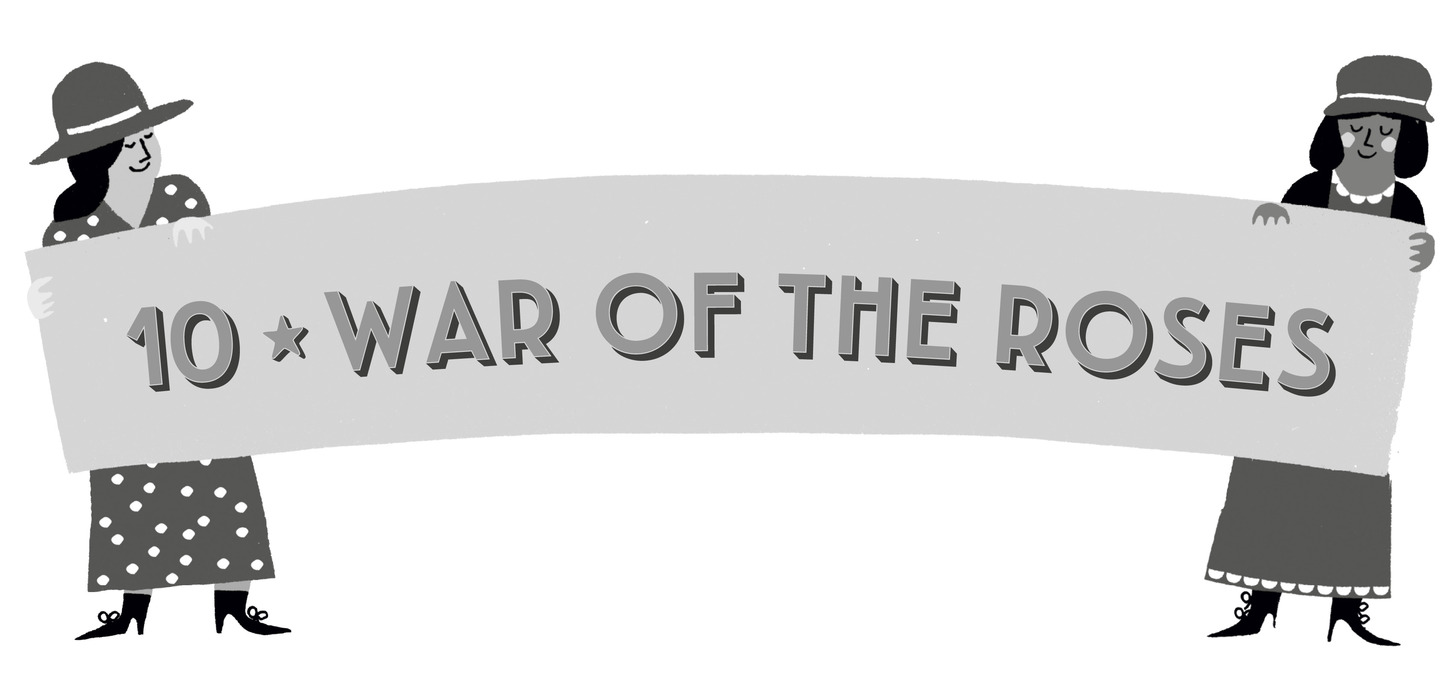
On Saturday afternoon, August 7, Governor Albert Roberts officially called the General Assembly to meet in special session. The session would start on Monday at noon. The suffrage confrontation—anticipated, relished, dreaded—was finally set. It would begin in less than forty-eight hours.
All over Tennessee, men of the legislature began packing their bags, kissing their wives and children good-bye, and boarding steam trains headed for Nashville. No one could tell how long they’d be gone. It could be just a few days or as long as three weeks (the full term of the session).
The moment they reached Union Station, welcoming parties of women pounced on them.
Here! Suffs cried out, shoving yellow roses at the men. Take these!
Take these instead! Antis shouted over the Suffs, thrusting red roses at the men’s suit lapels, trying to pin them on.

Suffragists used colors to bring attention to their movement. They often wore white dresses with yellow sashes in their public demonstrations. To them, yellow and gold represented the sun, a new day dawning for women. White represented purity of purpose. The Woman’s Party added other symbolic colors to their displays: purple for loyalty and green for hope.

Yellow or gold had long been the American suffrage campaign’s hue, while the Antis had adopted a patriotic red. Newspapers were already calling this battle over suffrage “the Tennessee War of the Roses.”
Over that August weekend, the lobby of the Hotel Hermitage was the place to be. Groups of Suffs, Antis, and legislators all gathered to meet, talk, or confront each other. The grandeur of the space—its marble columns and painted ceilings, the plush carpets below and shimmering chandeliers above—gave a sense of both seriousness and festivity.
By Saturday afternoon, the lobby was humming with conversation. The sounds of juicy gossip, business conversations, and heated arguments could be heard at every corner. Sun rays slanted through the painted-glass skylight, illuminating the feathered and flowered hats of ladies and the linen suits of gentlemen.
The Antis were descending upon Nashville with a vengeance. Mary Kilbreth, president of the National Association Opposed to Woman Suffrage, arrived from New York City. Laura Clay of Kentucky and Kate Gordon from New Orleans—the former suffragists who’d changed their tunes—were expected soon.
Together, the Antis reviewed their main talking points. They had to make convincing arguments to any legislators who were still on the fence about woman’s suffrage. And if any Antis forgot their main points, Josephine Pearson was there to remind them.
Remember the issues at stake in this fight, she crowed to a group of men and women who’d just arrived at the Hermitage:
The threat that the federal amendment poses to our states’ rights.
The frightening potential of racial equality if black women and men are allowed to vote.
And the “war of the sexes” that suffrage will surely unfold between men and “liberated” women who do not know their places.
Then, with a winning smile, she passed out a red rose to each of them. The number of Anti red roses seemed to multiply every minute.
The polished wooden doors of Anti headquarters swung open at exactly five o’clock that Saturday afternoon for a welcome party. All the legislators, the members of the Constitutional League, and the Antis of Nashville had been invited. Josephine Pearson’s southern hospitality made everyone feel at home. She greeted her guests with a smile, all the while keeping everyone’s punch glass filled and the cookie trays stacked high. She was in her element.
The reception was more than just a way to greet the legislators. Nina Pinckard had also organized something special: an anti-ratification exhibit for the crowd to wander through. The exhibit was full of provocative artifacts that showed the immorality of the suffragists. If the Suffs didn’t already have a bad enough reputation in the South, the Antis were about to make it even worse.
There were photographs of Susan B. Anthony’s black friends. There were Anti brochures and posters warning that ratification would “re-open the horrors of Reconstruction” when black men voted and even served in the legislature.
But the highlight of the exhibition was a dusty old book: Elizabeth Cady Stanton’s Woman’s Bible. It had been a huge bestseller in 1895—and a big headache for the Suffs ever since. Elizabeth’s main points—that the Bible wasn’t the Divine Word of God, but a creation by men to keep women down—had been causing a stir ever since it was published. Antis called it the work of Satan. Now they were labeling it “Mrs. Catt’s Bible” (which was also a huge stretch).
Nearly two hundred guests milled through the room. They admired the posters and brochures, then clucked their tongues at the copy of The Woman’s Bible. Josephine tapped her glass and stood on a small platform to thank everyone for coming. Nina Pinckard, Charlotte Rowe, and Mary Kilbreth spoke next.
Let’s defeat this amendment—together! they cried out to the cheering audience.
Just a few flights above, the Suffs winced at the idea of the Antis’ “exhibit.” For the most part, they stayed in their hotel rooms. Only occasionally did they send spies into the lobby. It couldn’t hurt to eavesdrop on the enemy.